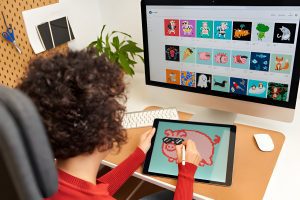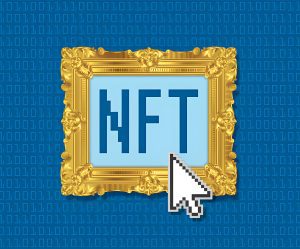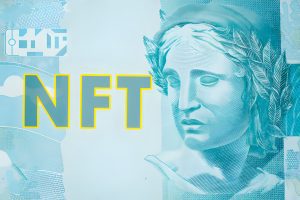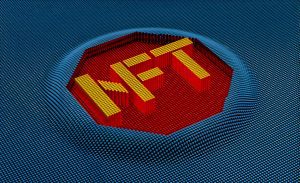Do you ponder on the question “how to turn my paintings into nfts” ? Well For painters seeking to convert their traditional paintings into NFTs, a good understanding of the process is important.
How To Turn My Paintings Into Nfts

The emergence of non-fungible tokens (NFTs) has ushered in a revolutionary era, providing artists with unprecedented opportunities to showcase and monetize their creations.
The initiation of turning paintings into NFTs necessitates a critical first step – the digitization of physical artworks. In stark contrast to conventional modes of art presentation, NFTs demand a digital format for seamless integration into blockchain platforms. Artists embarking on this digital transition must commence by digitizing their physical paintings through scanning.
This initial phase involves collaboration with reputable printing companies armed with powerful scanners. The objective is to capture the essence of the physical artwork in its entirety.
Following the scanning process, artists should meticulously review the digital rendition, addressing any imperfections or errors to ensure a faithful replication of the original piece in the digital realm.
1. Safeguarding Artistic Creations with Copyright Protection
In place where authenticity and ownership hold paramount significance, safeguarding digital art against unauthorized use becomes a critical concern.
Artists can adopt various methodologies to shield their work with copyright protection, aligning with their preferences and overarching objectives.
One viable approach entails bundling the sale of the physical painting with the NFT in an add-on form. This method ensures an intrinsic link between the physical and digital versions, providing buyers with a tangible connection to the original artwork.
Alternatively, artists may opt to sell the NFT independently, divorcing it from its physical counterpart and emphasizing the exclusivity of the digital asset.
In a creative twist, some artists opt to modify the NFT by incorporating a gif or video, thereby enhancing the digital experience. This innovative approach not only adds value to the NFT but also retains the option to sell the physical painting, offering a multifaceted engagement for prospective buyers.
2. Selecting the Appropriate NFT Marketplace
Once the digital transformation and copyright protection measures are in place, the subsequent crucial decision revolves around selecting the apt NFT marketplace for showcasing and selling the NFTs.
Various blockchain platforms exist, each possessing distinct characteristics, catering to diverse audiences and adhering to specific token standards.
Artists must meticulously evaluate their specific requirements, target audience, and the nature of their art to align with the most suitable blockchain platform. Considerations should include transaction fees, marketplace features, and the overall compatibility with the artist’s creative vision.
3. Cryptocurrency
As NFTs operate within blockchain ecosystems, artists must navigate the intricacies of the cryptocurrency landscape to facilitate the seamless buying and selling of their digital assets.
Depending on the chosen platform, artists need to acquire the associated cryptocurrency to cover listing fees and transactional aspects.
This step underscores the intersection of traditional artistry and the futuristic dimension of digital currencies.
Artists may need to adapt to this new financial realm, exploring cryptocurrency exchanges to secure the necessary digital funds for their journey into the NFT space.
4. Integrating with the NFT Marketplace
With the digital artwork ready, artists must seamlessly integrate their cryptocurrency wallet with the chosen NFT marketplace. This integration facilitates the smooth transfer of digital assets, enabling artists to list their NFTs for sale and actively engage with the vibrant community within the marketplace.
5. Showcasing Art to the World
Creating an account on the NFT marketplace marks the artist’s official entry into the dynamic world of digital assets.
Upon completing the registration process and furnishing the necessary information, artists gain a dedicated space to showcase their NFT collection, presenting a compelling opportunity for potential buyers to discover and acquire these digital masterpieces.
6. Utilizing Image to NFT Converters
To streamline the process for artists, platforms like Appy Pie offer image to NFT converters, eliminating the need for coding expertise. This user-friendly tool empowers artists to effortlessly upload their images and convert them into NFT art within minutes.
This democratization of the NFT creation process opens doors for both seasoned artists and newcomers, providing access to this innovative space.
7. Launching Your NFT Artwork
Once the image is successfully converted into an NFT, artists are poised to introduce their digital creations to a global audience. Listing the NFT on the marketplace strategically positions it for potential buyers, offering an opportunity for discovery and acquisition of the digital masterpiece.
The process of turning paintings into NFTs represents a dynamic fusion of traditional artistry and cutting-edge technology.
This encompasses digitization, copyright protection, blockchain selection, cryptocurrency engagement, and seamless integration with NFT marketplaces.,
Image to NFT converters emerge as invaluable tools, simplifying the intricate process and democratizing access to the world of NFTs.
Embracing the future of art monetization through NFTs empowers artists to reach a global audience, transcending geographical boundaries, and redefining traditional paradigms of art ownership and appreciation.
This innovative intersection of artistic expression and technological advancement positions painters at the forefront of a new era, where the canvas extends beyond physical constraints into the limitless realm of digital possibilities.
Artists are encouraged to explore, experiment, and contribute to the ongoing narrative of the NFT space, where each stroke of the digital brush adds to the collective masterpiece of the evolving art world.
See Also: NFT Flipping: How To Flip NFTs With These 8 Important Steps
Improving the Value of Your NFT Artwork

The ascent of non-fungible tokens (NFTs) has ushered in a transformative era, presenting artists with unprecedented opportunities to redefine the value of their creations.
For artists aiming to maximize the worth of their NFT artwork, adopting innovative strategies becomes pivotal, transcending the traditional metrics of art valuation.
The Importance of Rarity in NFTs
At the core of the value proposition of NFT artwork lies the pivotal concept of rarity. The unique and intriguing nature of an NFT directly correlates with its potential to command exponential amounts in the marketplace.
In a digital space teeming with a plethora of assets, standing out as a distinctive creation becomes imperative for artists seeking to enhance the perceived value of their NFTs.
Tokenizing and Eliminating the Original Piece
A daring strategy employed by artists to augment the value of their NFT artwork revolves around the tokenization of the creation, followed by the intentional destruction of the original physical piece.
While this approach might encounter resistance from traditionalists, it introduces an element of scarcity and exclusivity highly coveted within the NFT community.
By removing the physical counterpart, artists signal a commitment to the unique nature of the digital asset. This strategy resonates with collectors who not only seek ownership but also desire a sense of exclusivity and rarity in their NFT acquisitions. The act of destruction becomes a symbolic gesture, emphasizing the singularity of the digital creation.
Sending Physical Art as a Complimentary Gift with the NFT
An inventive and controversial strategy to amplify the value of NFT artwork involves dispatching the physical piece to the buyer as an additional benefit when acquiring the NFT. While not all physical artworks align with this method, it introduces a tangible and tactile dimension to the digital transaction.
By quoting a higher price for the NFT and including the physical artwork as a customary gift, artists appeal to collectors who value the tangible connection to the art. This strategy not only adds perceived value but also provides buyers with a dual experience – owning a digital token and possessing the physical manifestation of the artwork.
Tokenizing a Code Within a Microchip
In a more futuristic approach, artists explore the option of tokenizing a small code, message, or unique identifier and embedding it within a microchip. This microchip is then discreetly placed within the physical artwork.
This innovative strategy serves multiple purposes – it enhances the credibility of the physical artwork among viewers, introduces an interactive element, and offers a means to track the location of the art.
By integrating technology into the traditional art form, artists engage collectors on multiple levels. The tokenized microchip becomes a digital signature, enriching the digital and physical connection while providing insights into the artwork’s journey.
The Controversies Surrounding Value Enhancement Strategies
While these strategies hold the potential to significantly elevate the value of NFT artwork, they are not without controversies.
Traditional art enthusiasts may find the destruction of physical pieces distasteful, and the inclusion of physical art as a gift might blur the lines between the digital and physical realms of ownership.
Moreover, the tokenization of codes within microchips raises ethical questions about surveillance and privacy.
Artists must navigate these challenges, understanding that value enhancement strategies, while innovative, may not resonate universally and may generate debates within the art community.
The Nexus of Value and Innovation in the NFT Space
In the realm of NFTs, the interplay between value and innovation is dynamic. Artists are challenged to push boundaries, experiment with unconventional strategies, and redefine the very essence of artistic value. The NFT space thrives on creativity, uniqueness, and the ability to captivate a global audience.
As artists use these strategies to enhance the value of their NFT artwork, they contribute to the ongoing evolution of the digital art landscape.
Each decision to tokenize, destroy, or embed a microchip becomes a brushstroke on the canvas of the NFT space, shaping its future and influencing how art is perceived, valued, and acquired in the digital age.
The nexus of value and innovation in the NFT space invites artists to push boundaries, challenge conventions, and contribute to a transformative era in art valuation.
See Also: Understanding NFT Development: 4 Important Steps For NFT Development
The Challenges Of Transforming Paintings into NFTs

The intersection of art and technology has ushered in a transformative era with the advent of non-fungible tokens (NFTs), offering artists innovative avenues to monetize their artistic creations.
However, as artists look into the process of converting their paintings into NFTs, they encounter a multitude of challenges and controversies.
The Quandary of Destroying for Tokenization
When contemplating the tokenization of their paintings, artists are confronted with a primary challenge – the ethical dilemma associated with destroying the physical counterpart.
This strategy, intended to amplify the rarity and exclusivity of the NFT, becomes a focal point of debate within the art community. Traditionalists argue that the intentional destruction of a physical piece diminishes the inherent value and sanctity of the artwork.
Artists find themselves grappling with the question of whether the potential financial gains from the NFT transaction justify the destruction of the original creation.
Balancing the preservation of artistic integrity with embracing the digital frontier poses a significant challenge for those navigating the ethical landscape of turning paintings into NFTs.
Uniqueness
In the pursuit of augmenting the value of NFT artwork, artists often find themselves ensnared in the paradox of uniqueness.
While rarity serves as a key driver for NFT value, a delicate equilibrium must be maintained between creating something truly unique and ensuring mass appeal. Venturing too far in either direction poses challenges.
Artists must assess whether the NFT aligns with their artistic vision while also considering the broader tastes of the digital art market. The challenge lies in finding the sweet spot where the artwork remains distinctive enough to command value yet appeals broadly enough to facilitate sales.
Navigating this paradox necessitates a nuanced understanding of the target audience and a strategic approach to preserve artistic integrity while maximizing market potential.
Privacy Concerns Surrounding Microchip Integration
The innovative approach of embedding a microchip within the physical artwork for tokenizing a code introduces a new set of challenges related to privacy concerns. While the aim is to create an interactive and trackable element for the NFT, questions of surveillance and privacy become paramount.
Artists grapple with ethical considerations surrounding the collection of data tied to the physical location of the artwork. This challenge requires a delicate balance between leveraging technology for added value and respecting the privacy rights of both the artist and the eventual owner of the NFT.
The Clash of Traditional and Digital Art Values
Controversies surrounding the value enhancement strategies for NFT artwork often stem from the clash between traditional and digital art values.
Enthusiasts of traditional art may view the intentional destruction of physical pieces or the inclusion of physical art as a gift with skepticism, questioning the authenticity and sanctity of the artistic process.
Artists venturing into the NFT space must avoid this clash, recognizing that value is subjective and deeply rooted in the perspectives of diverse art communities.
Bridging the gap between traditional and digital values involves fostering a dialogue that acknowledges the diversity of opinions and seeks to find common ground in the evolving landscape of art creation and consumption.
The key lies in approaching these challenges with thoughtfulness and an open-minded perspective. Artists must engage in ongoing conversations within the art community, fostering understanding and addressing concerns.
See Also: Understanding NFT Development: 4 Important Steps For NFT Development
Conclusion

It’s clear that this art is a blend of innovation, dilemmas, and evolving values. Artists face ethical quandaries when deciding to tokenize their work, as the clash between the digital and traditional art worlds becomes apparent.
The paradox of uniqueness challenges creators to strike a delicate balance between rarity and broad appeal, requiring a nuanced understanding of the digital art market.
Privacy concerns surface with the integration of microchips, raising questions about surveillance and data protection. As artists navigate these challenges, they must carefully consider the implications of their choices on both artistic integrity and the privacy rights of collectors.
In the midst of controversies, the clash of values between traditional and digital art communities adds another layer of complexity. Bridging this gap calls for ongoing dialogue and a recognition that value is subjective, rooted in diverse perspectives.
In essence, turning paintings into NFTs is an artistic frontier where technology meets creativity, offering new opportunities and sparking debates. This space demands not only technological prowess but also a deep appreciation for the ever-evolving landscape of art in the digital age.
.
.
Featured Image Credit: nftgenerator.io
We Hope you’ve learned a lot from this article!! We’re glad you did. Join our telegram community to get up-to-date news, educational materials, free online classes, market analysis, and crypto futures trade signals that will help you grow and become profitable